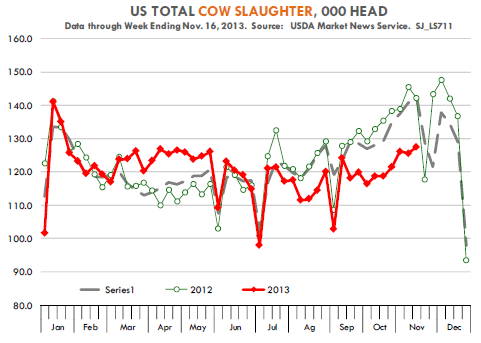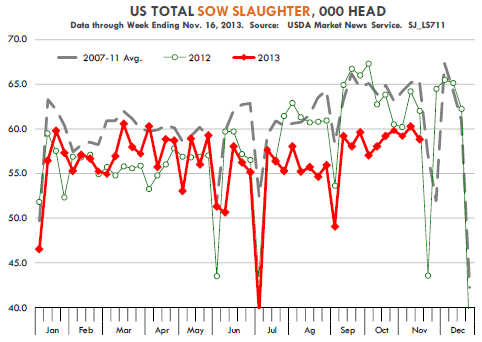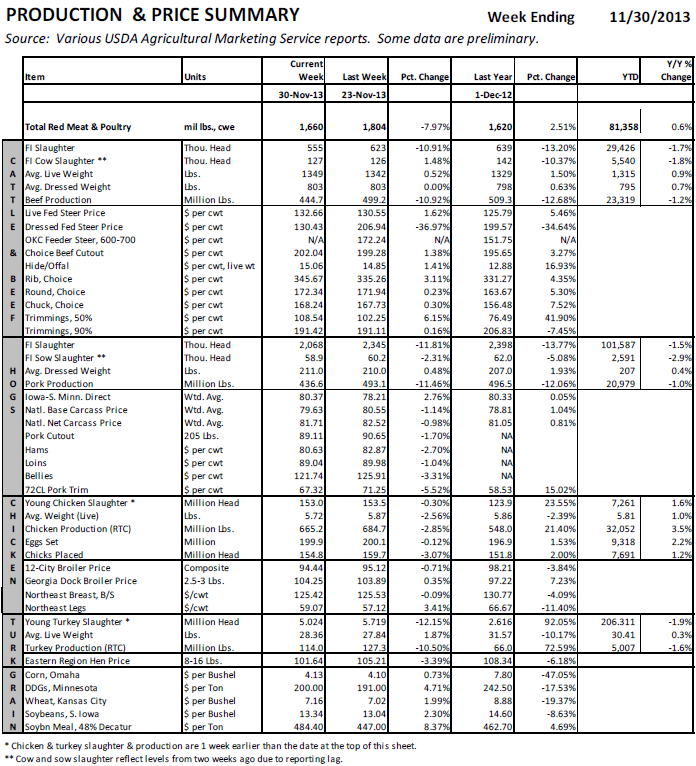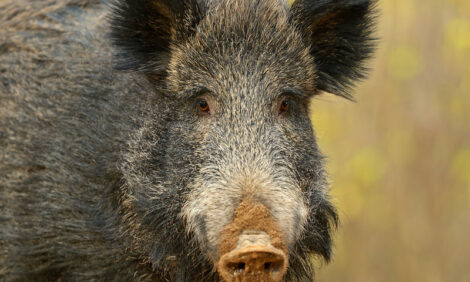



CME: Weekly Cow, Sow Slaughter Likely to Stay Light
US - Lower feed costs and significantly improved margins have encouraged producers to reduce the number of breeding animals they send to market, write Steve Meyer and Len Steiner.Since August, weekly cow and sow slaughter has been running significantly below year ago levels and the numbers will likely remain light for the foreseeable future. For the last four reported weeks, US weekly cow slaughter has averaged about 125,200 head, down 11 per cent from the previous year.


Weekly sow slaughter has averaged 59,500 head, down 4 per cent from last year. In the short term, the decline in the number of breeding animals going to slaughter will tend to reduce the supply of beef and (to a much lesser degree) pork.
For specific end users, such as those that use lean grinding beef (hamburger patty manufacturers) or sow trimmings (high quality sausage), the shift has a direct inflationary impact. Sometimes all one hears in the press is how lower feed costs will lead to lower meat prices, and eventually that may be the case. In the near term, however, prices for some beef and pork items will be higher, not lower.
Livestock producers welcome the decline in feed input costs but they have to contend with the overall decline in the number of cattle and hogs available for marketing. The quickest and least expensive way to expand production is to put more weight on animals.
Biological constraints limit the weight increases past a certain point and producers also have to contend with discounts for carcasses that have too much fat on them. Still, producers are doing their best to keep weights up and offset some of the decline from lower slaughter numbers.
Average steer weights for the week ending 16 November (latest available data) were pegged at 878 pounds per carcass, up 0.7 per cent higher than a year ago. Overall average cattle weights for the week ending 30 November were reported at 803 pounds per carcass, up about 5 pounds or 0.6 per cent from the previous year.
Hog carcass weight gains have been even more significant. The increase in hogs weighs is in part due to much cheaper and higher quality feed. Also as one of our readers correctly pointed out, some producers affected by PEDv now have more space in their barns and thus are able to grow some pigs out to heavier weights.
As we mentioned last week, the weight gains for packer owned hogs have been nothing short of astounding, with average carcass weights for packer owned hogs reported at 218 pounds on Friday. The overall average hog weights for the week (based on Mandatory Price Reporting system) were 213 pounds, up 2.8 per cent from a year ago.
Please note that this is higher than the preliminary estimate reported by USDA and included in the table below. Normally USDA will revise these numbers when all data is received and we think the 213 pound weights are closer to the reality on the ground.
With hog weights now running close to 3 per cent over a year ago and how slaughter about the same as in 2012, we are now seeing quite a bit more pork coming to market. The increase has affected some portions of the market more than others. The price of 72CL pork trimmings has declined sharply compared to October levels (-17 per cent) but still remains about 11 per cent higher than a year ago.
Other pork items, such as hams and bellies also have been pressured lower but remain above last year’s levels. In all, pork demand appears to be in good shape and has helped support overall pork pricing despite the increase in supplies.









